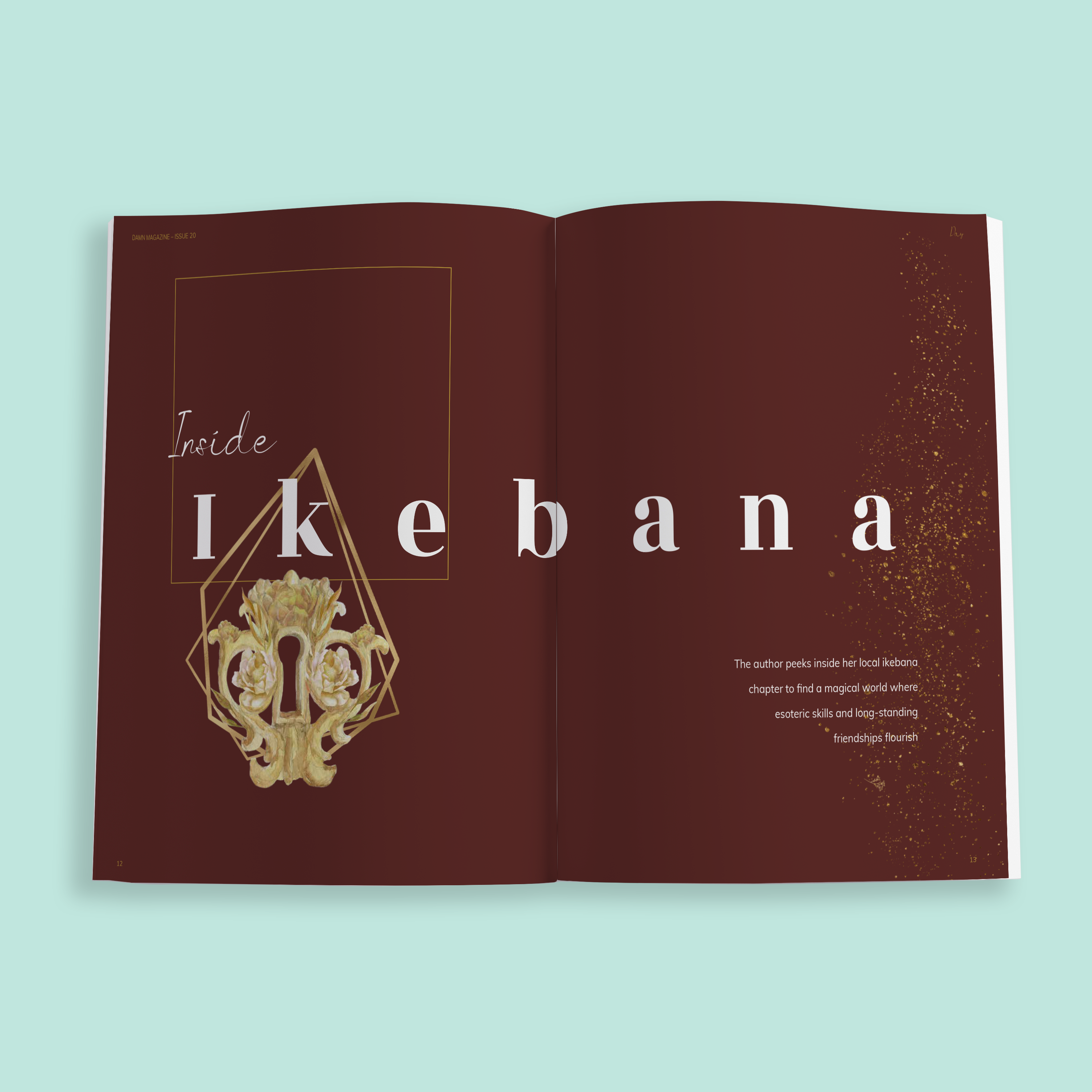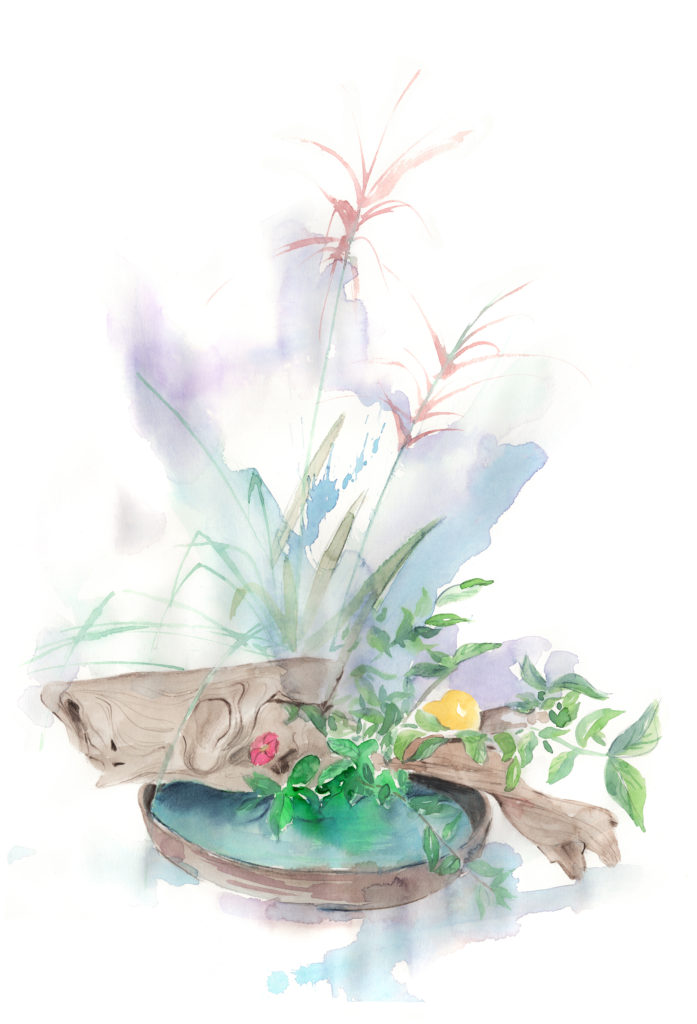I’m here to tell you my spell-binding day captivated by the senior students and instructors of the Ohara School of Ikebana’s Ottawa chapter is the closest I’ve ever been to life inside a secret society.
I’ll admit, my youthful perception of leisure and hobby clubs was rather narrow: retirees and housewives, finding community over tea and lady fingers. More specifically, arranging flowers with seniors just didn’t produce much intrigue.
After spending a day with my local ikebana chapter, I’m convinced the Japanese art of flower arranging is not your average leisure club, but instead, perhaps, one of the coolest clubs to which I am lucky to have access.
Ikebana’s origins trace back hundreds of years, evolving through numerous schools and passed down through generations. In fact, the Ohara School is currently under the leadership of its founder’s great-great grandson.
It’s a contemporary art combining theory and careful practice, a study of angles and movement, but also a lot of patience, some ruthless trimming, and (as I learned) the occasional power tool. Arrangements follow particular rules and techniques that can take years to master. Spending a day with masters of this art form was a privilege.
It began with a rather cryptic email with the subject ”Fwd: A bunjin and driftwood experience.”
Hi Emily
This is where I was today, it’s about an hour’s drive from my house … so it’s a little trek.
If you would like to come, ignore all the instructions in this email and just call me, this is just for your information. If you have the time, it’s worth the trip – it’s so pretty.
W
There was no address, only a date and some instructions about flowers, which I didn’t understand.
“W” is Wendy Batson, President of the Ohara Ikebana School’s Ottawa chapter. She is also an old-friend of my late god-mother, who for over 20 years taught at the Ohara School. Occasionally, as a child, I would be brought along to a workshop, or an exhibition. As a young adult I would be asked if I was interested to join, but arranging flowers seemed boring to 20-something me. After losing my god-mum to cancer several years ago, nearly-40 me decided it was time to call Batson to learn more about why ikebana inspired my god-mum for so many years.
In her charming Trinidadian accent, Batson explains the get-together will be a type of workshop to create arrangements for a virtual exhibition in connection with the Japanese Embassy to Canada. Before we hang up, she tells me I’ll receive more information soon.
A few weeks go by, no follow-ups. So I email to ask. Batson replies, sounding rather like a secret intelligence officer:
I have not forgotten about you, it is happening and we are expecting you.
We received another message. Will send it to you with directions. Looking forward to seeing you.
W
Sure enough, the address arrives in another message–an email from a woman named Marie-Eve Coupal–with another cryptic message:
Come for 9:30-10:00 am
Bring your lunch and stay all day
Many possibilities. Your choice. Create all you want. …
I was in.
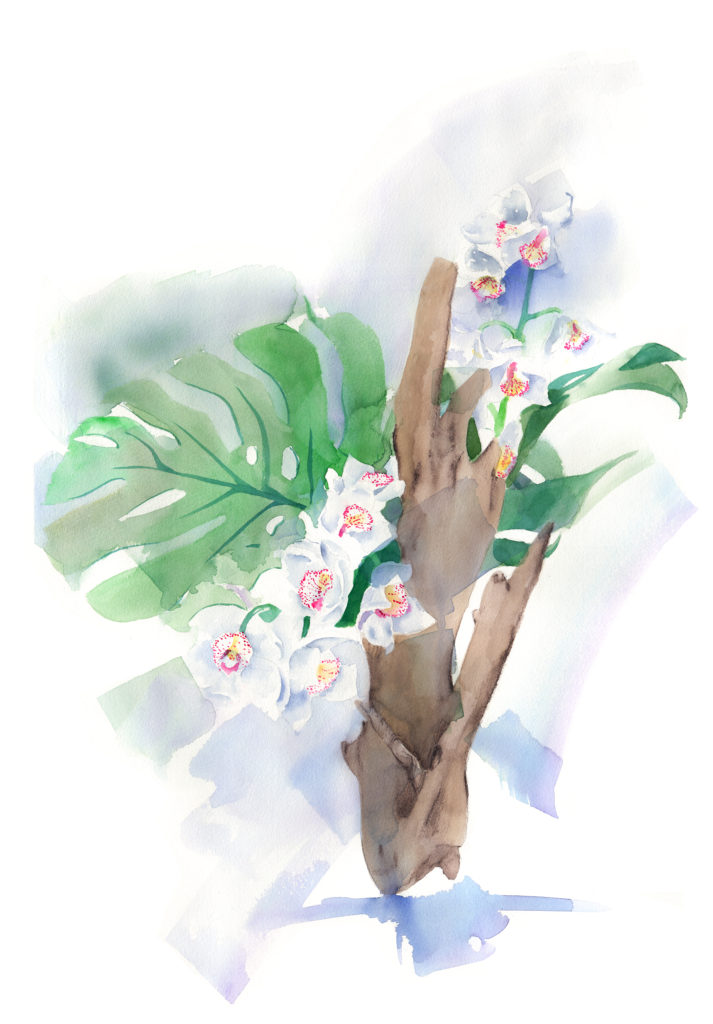
Following the directions, I wound my way down a long private driveway, on a bluff overlooking the Ottawa river. There, towering over a wide expanse of sun-speckled water, sailboats gliding by, was Coupal’s ultra modern “cottage.” An architectural marvel, the home sits on the footprint of a former rail line hugging the cliffside. It is a magical spot for a day of flower arranging, in fact, the building site was discovered by Coupal while foraging driftwood for her ikebana pieces.
Today, Coupal’s impressive driftwood collection–logs washed onto the riverbanks below, then hiked up to the cottage by friends and family over the years–will be the base for much of the day’s arrangements.
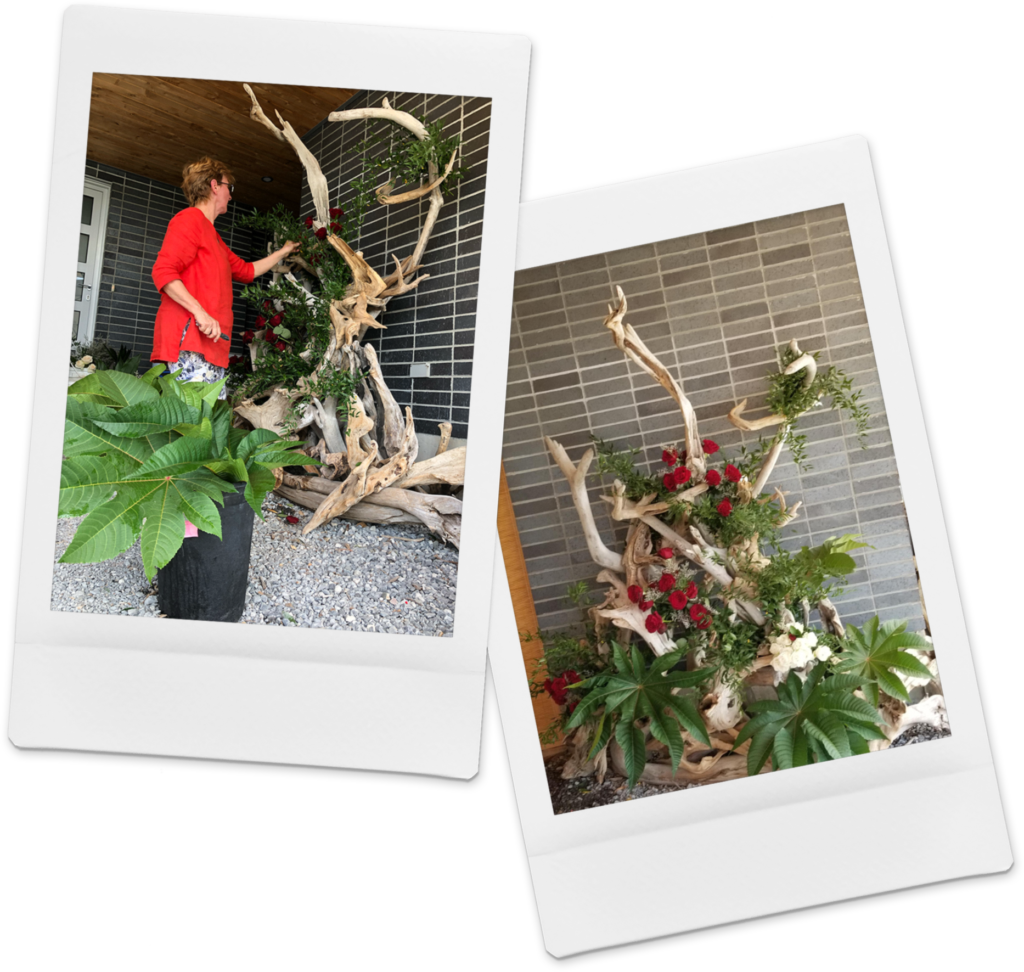
By the time I arrive, the group is already busy at work. In the shade of this opulent clubhouse-for-the-day, six women, ranging in age from 60-88, are getting their workstations set up. Clippers, buckets of flowers, vases, wires, nails, hammers, kenzans, and a cordless drill or two are some of their tools of the trade.
Batson is doing rounds, checking in on the others’ work. In between, she is on day two of working away at her six-foot-tall arrangement. She’ll finish it before the day’s end, and, after a photographer snaps photos, she’ll turn to me and say: “I probably would have used my pink lilies and used the yellow with it, I think that would have been cool as well–I’ll pull it apart and try it actually,” and go back to work. A member for over 40 years, Batson says: “You never stop, the thing gets into your blood, and you don’t have a choice.”
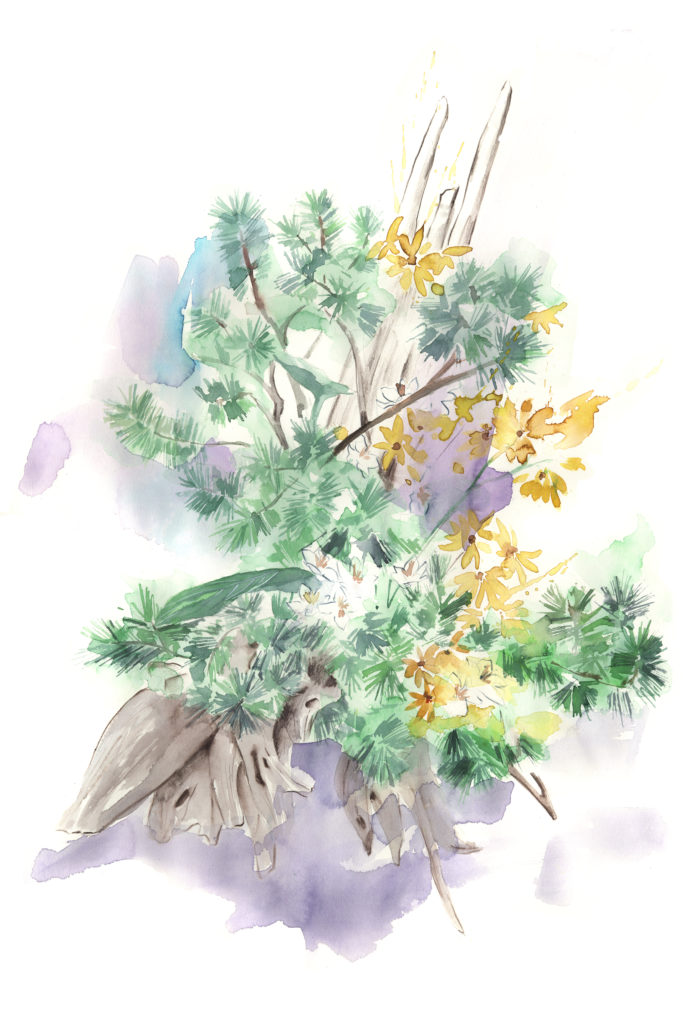
The ladies work quickly and collaboratively. Their delicate works of art need to be photographed before elements get blown out of position or wilt in the rising temperatures and increasing wind. There’s a lot of talking to the flowers, coaxing them to “please stay”–and more than just the occasional swear word. I learn they are creating arrangements in the Bunjin style today.
When creating a bunjin arrangement in a vase, students use containers that would be considered in a Chinese style, to reflect the origins of bunjin. Inspired by Chinese and Japanese paintings, these arrangements typically display larger flowers, and use only three or four materials. “The main characteristics are bold, simple, and eye-catching.” says Iris Waung. “It’s a freestyle, there’s not many rules, like the other styles. You kind of eye it by your own experience,” she says.
A member since her child was a baby, Waung tells me her initial interest was to take some for herself. She was also influenced by her own mother’s interest in ikebana: “We were in Taiwan and my mother really enjoyed the look of it, very simple… My mother used to take some courses, and she took some pictures, and I really liked them. So I found this club, these classes, and now I’m a teacher.”
“It started with the container,” says Lyne Whyte, of her bunjin design. “It was a find of mine in a thrift shop that I couldn’t resist. It’s sort of a traditional bunjin container.” Whyte started her ikebana studies about 25 years ago, she says, “and then with having children and having a job I wasn’t able to continue. I always said: ‘OK, when I retire, I’m going to do ikebana.’ So that’s what I did!”
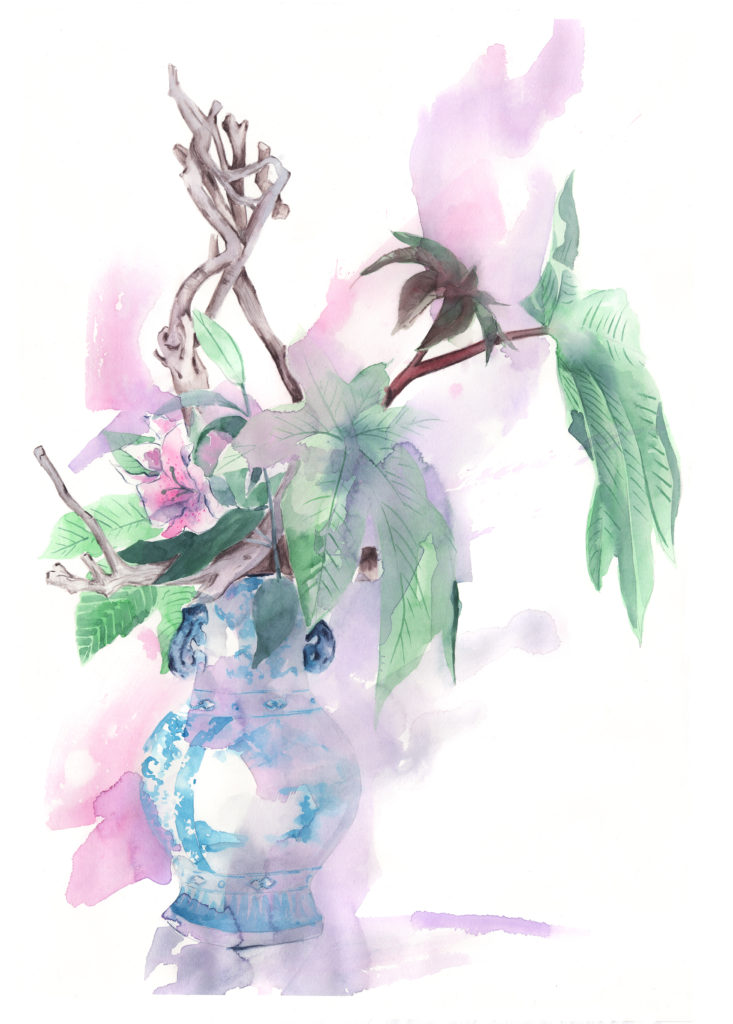
Lunchtime, announces Coupal. The group takes a break, albeit reluctantly–like kids having too much fun at recess. Coupal serves French wine, cheese, espressos, and more.
Everyone has brought something.
Kyoko Kosaki passes around home-made rice cakes. At 88, she is the oldest of the group. “Anywhere I go I’m the oldest–and the loudest,” she laughs. Kosaki has been a member of this ikebana chapter for more than 20 years; however, she started her ikebana education at another school, in Japan. Born in Hokkaido, she moved to Canada in 1967 from Tokyo, and taught Canadian diplomats and others Japanese. “It makes me young because I go with these people,” she tells me over lunch describing her ikebana friendships. “You never get old if you’re busy.”
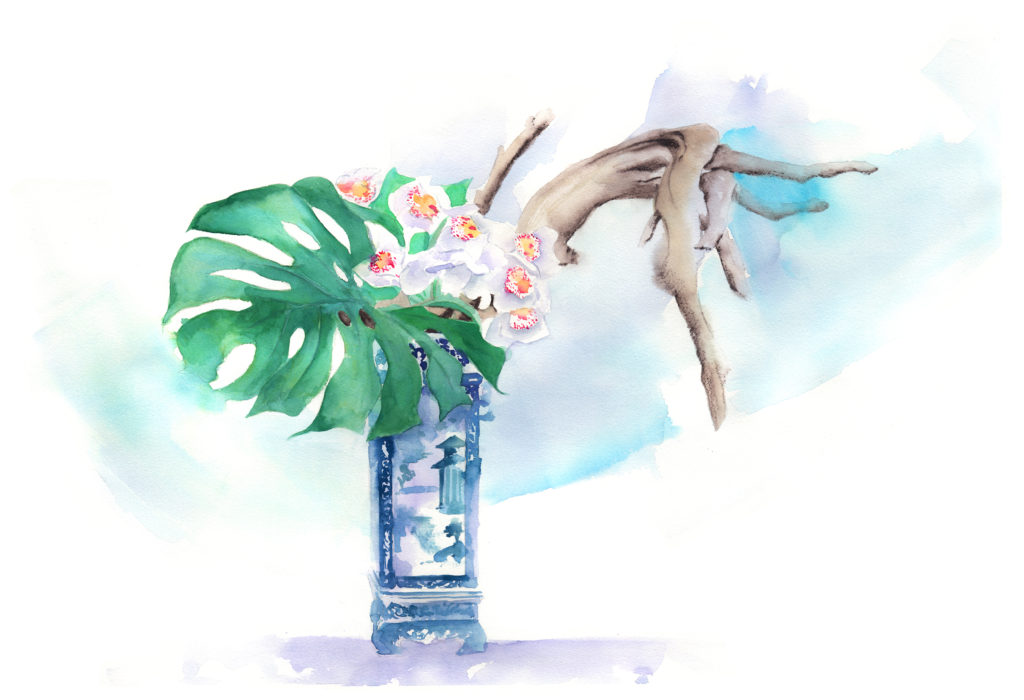
“In Japan, we say it’s good luck to eat the last piece,” she says, trying to sell someone on the remaining cake.
“OK, I’ll be the old maid,” replies Batson.
Sure, my local chapter of the Ohara School of Ikebana is ageing, with fewer younger members enrolling. But just like any hobby, the demographic skews to those with extended leisure time. This doesn’t mean you need an abundance of leisure time to practice ikebana.
As many women in the group exemplify, you can start at any age, and come back to it at any point in life. In a way, this mirrors ikebana itself, which uses plant and flower material in different life stages. Ikebana often explores opposites and the beauty of asymmetry, playing with place, lines, form, and phases of plant life. Presence vs. absence, and life vs. death, are just some common themes. Ikebana can be a life-long pursuit that waits for you, which–in an age where everything moves faster than what feels humanly possible to keep up with–is rare.
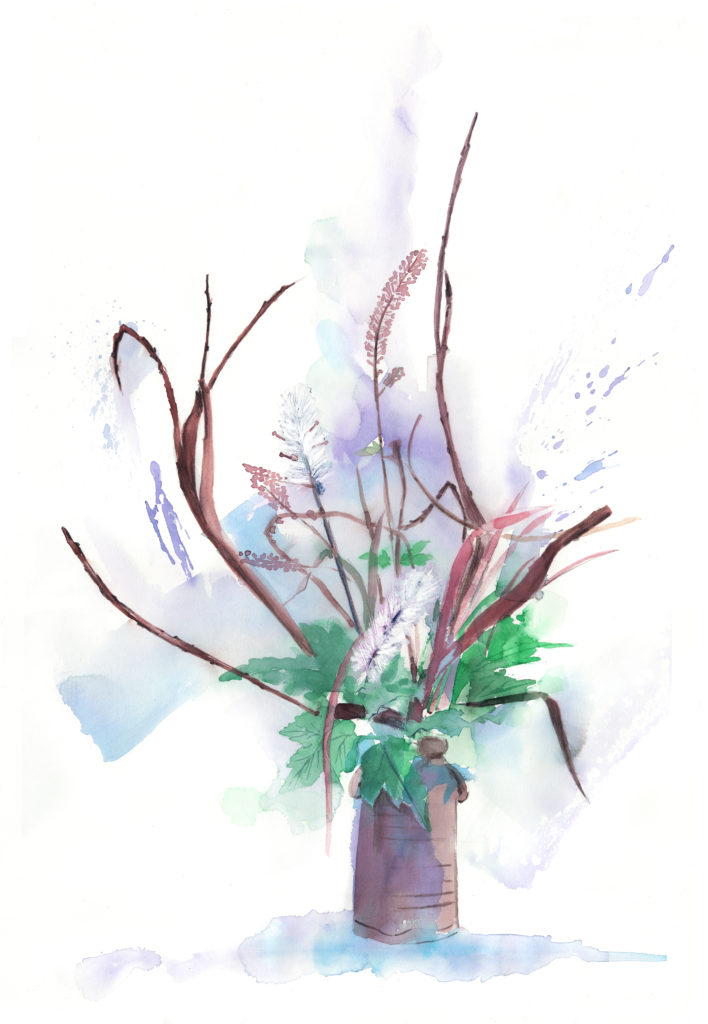
Of course, the Ohara School of Ikebana is not a secret society, the organization has over a million members all over the world and the school encourages the practice far and wide.
But I’m convinced this chapter of the school may be the best-kept secret for those of any age looking for a community steeped in tradition, careful study and practice, deep friendships, a few powertools, and just a hint of something magical.
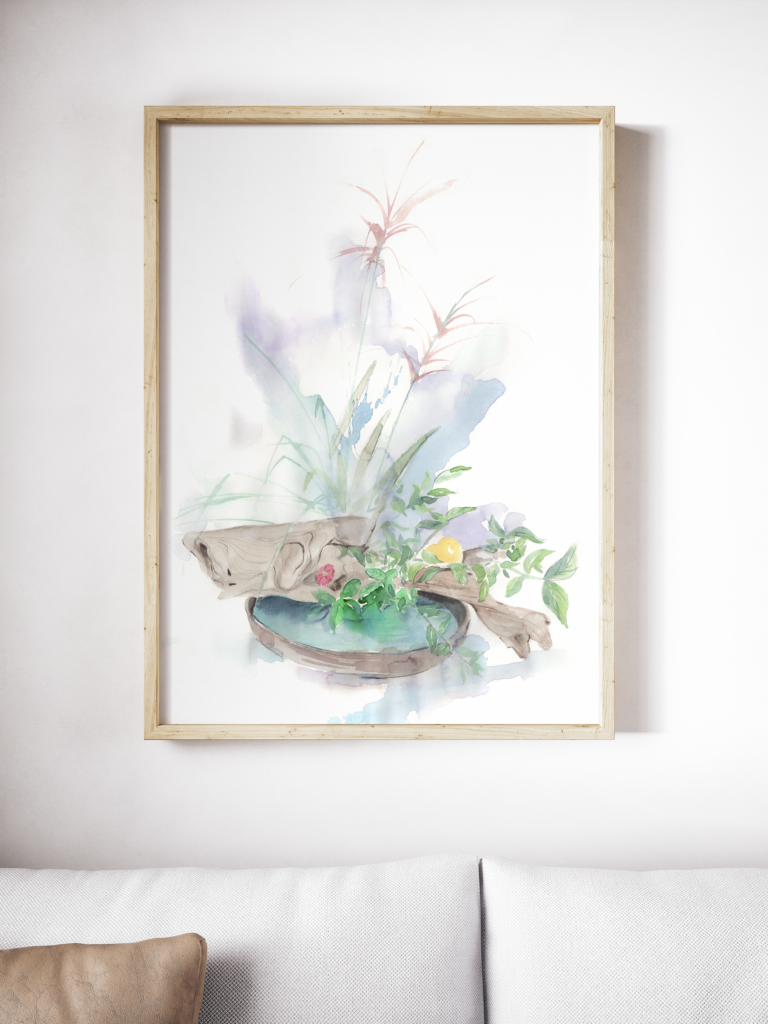
Liven up any wall with museum-quality watercolour prints! Get yours from the DamnMag Store!

